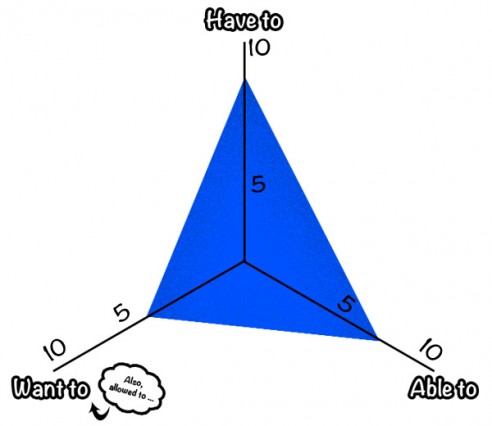![]() Oct 23
Oct 23
The Decision Book [Updated]
Update: I’ve posted all my favourite models from this book. If you’ve been following, you’ll have already picked up a copy for yourself. It’s a quirky and fun little toolbox. Passing the torch on this one tomorrow! Hope you’ve enjoyed the posts ;]
A friend of mine just gifted me one of the quirkiest books: The Decision Book by Mikael Korgerus and Roman Tschäppeler.
The book is concise and packed with gift best decision making models that you can use at school, at work, or for your own personal decision making.
The decision book is split into four parts: Models for self improvement, models for self awareness, models to understand others better, models to help improve others.
I have already used two of the models in the book: The Rubber Band model to help a friend make a decision on two very attractive offers, and the Eisenhower model to help me manage my time better. I’ll be posting about those two models soon!
I’m enjoying this book so much that I’m going to start posting my favourite models from it – no mind mapping this time and long posts.
Please make sure to visit 50 Top Models – the author’s website. If you like what you see, buy the book! Support the author and awesome content.
![]() Oct 21
Oct 21
The Swiss Cheese Model
The Swiss Cheese Model is one which describes accident causation as a series of events which must occur in a specific order and manner for an accident to occur. A stack of unique individual slices of cheese is analogous to an organisational system – where each layer contains a gap.
Accidents occur when a process falls through each of the gaps in each layer – described by the transformation of hazards to accidents. There are two types of gaps – latent and active failures. Latent gaps are existing problems inherent in the system, and active ones are the acute failures that lead to an accident.
This model is useful in tracking root causes for failures and help in identifying risks before they become issues.
“Quality is never an accident; it is always the result of intelligent effort.†~ John Ruskin
Oh and the inventor of this approach is a University of Manchester graduate … ahem ahem …
This model is from The Decision Book. Please make sure to visit 50 Top Models – the author’s website. If you like what you see, buy the book! Support the author and awesome content.
![]() Oct 20
Oct 20
The Personal Performance Model
The personal performance model is one that needs to be used like a survey – for a period of three weeks, fill this model rating each category (three of them) on a scale of 0 – 10. To do this, every day rate your tasks (as a group) by answering the following questions:
Want to: To what extent does this role correspond to what I want to do
Have to: To what extent is this role imposed on me?
Able to: To what extent do my tasks match my abilities?
The results
Once the three weeks are done, look at your maps.
- If your map changes constantly, then you have a good variety of tasks.
- If your stays the same, then you need to ask yourself are you being challenge enough? Where can you improve?
This model is from The Decision Book. Please make sure to visit 50 Top Models – the author’s website. If you like what you see, buy the book! Support the author and awesome content.





Chatter